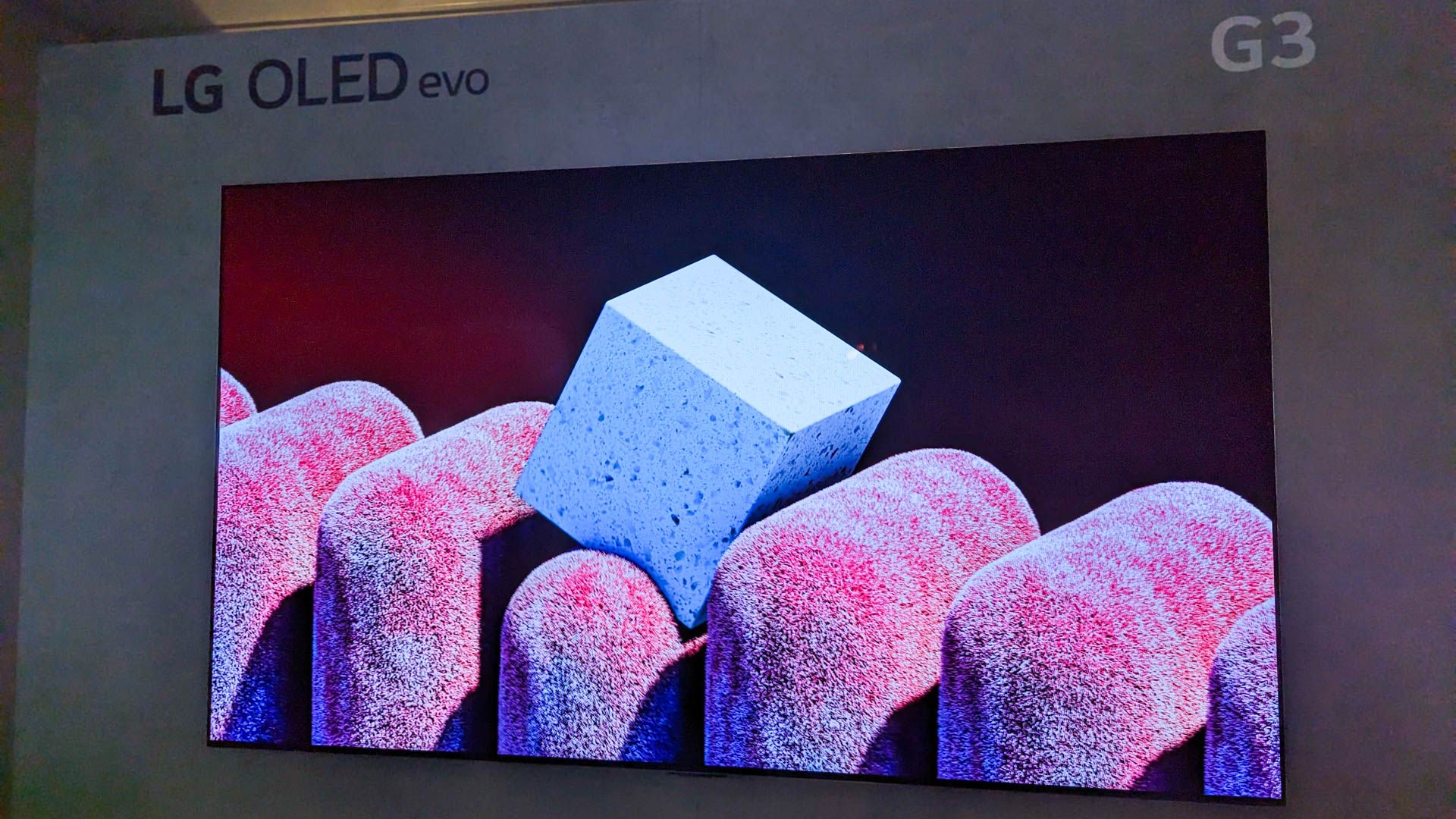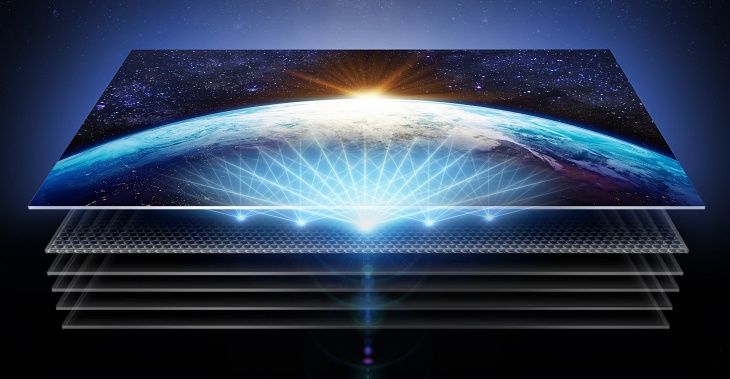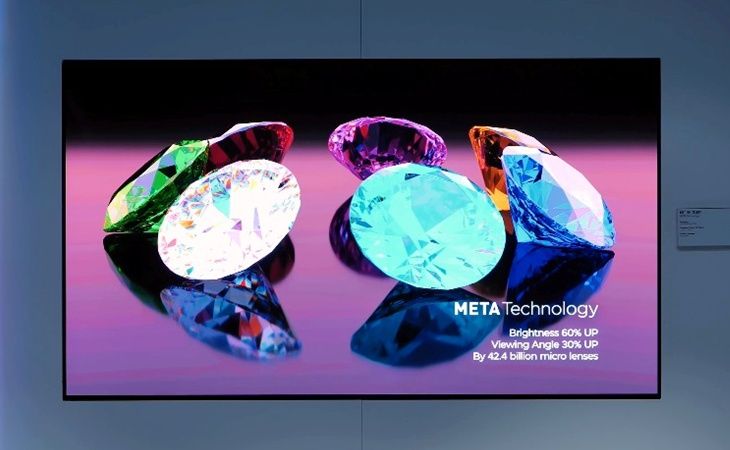Quick Links
Key Takeaways
A Micro Lens Array is a layer of incredibly tiny lenses that helps stop light wastage due to internal reflections in OLED TVs. This increases their overall brightness.
OLED TVs are known for their impressive picture quality, but the brightness is one area where high-end LED TVs have long managed to outshine them. However, a new brightness-boosting technology---Micro Lens Array--- hopes to change that.
What Is Micro Lens Array?
Micro Lens Array (MLA) technology is an assembly of microscopic lenses, typically a few dozen or a few hundred microns in diameter. Not to be confused with Samsung's MicroLED technology, this array is used in various applications, including the newest OLED panels from LG Display, to reduce the wastage of light from a light source by guiding it using convex lenses onto the intended target.
Traditional OLED panels are, unfortunately, pretty bad at effectively capturing all the light generated by the OLED pixels. This is because a significant amount of light is lost because of internal reflections. But by employing the MLA technology, LG Display has managed to greatly reduce the amount of lost light, resulting in brighter OLED panels.
Besides a brightness boost, MLA also improves the already-great viewing angles of OLED panels. LG Display claims the OLED panels using MLA offer the widest viewing angle at 160 degrees. Plus, the microlenses make the OLED panels more energy-efficient, as they can reach the same brightness as a traditional OLED panel by consuming less power.
But MLA is only the hardware part of the new and improved OLED panel from LG Display. The other part is software.
What Is META Technology?
META Technology, not to be confused with the company formerly known as Facebook, is the marketing term used by LG Display to describe its third-generation OLED technology that uses MLA technology and a brightness-enhancing algorithm called META Booster.
LG Display claims META Booster analyses the brightness information of a scene and makes the necessary adjustments to deliver accurate peak brightness where it's required. Simply put, the algorithm helps the OLED panel make the best use of MLA in providing a brighter picture.
The company claims META Technology can boost the OLED panel brightness by 60%. And by using 5,117 microlenses per pixel in a 77-inch 4K OLED panel, it achieved 2,100 nits of brightness in a 3% window, which was unheard of until now for OLED panels. Even the first-generation QD-OLED panels from Samsung Display, which use quantum dots instead of color filters to boost brightness, can't reach anywhere close to these levels.
EX Technology vs. META Technology
EX Technology or OLED.EX is the predecessor to META Technology and the second-generation OLED technology stack offered by LG Display. It includes several improvements over the company's first-generation or traditional OLED technology, such as the use of deuterium instead of hydrogen in the OLED pixels. This helps OLED.EX displays deliver a 30% brighter picture than traditional OLEDs. It also reduces the bezel thickness by up to 30% and includes a machine-learning algorithm to adjust the visual performance based on a user's viewing patterns. As a result, OLED.EX displays are a significant improvement over the company's first-generation OLED technology.
The META Technology builds up on the EX Technology by keeping deuterium, thinner bezels, and the machine learning algorithm, and adding MLA technology and META Booster. This results in even brighter OLED panels with wider viewing angles. So META Technology is better at everything than EX Technology without any new downsides.
Which OLED TVs Have MLA?
As of March 2023, the Panasonic MZ2000 and Philips OLED+908 are the only OLED televisions that explicitly confirm the inclusion of MLA technology. However, both companies are yet to announce the pricing or availability details. But considering that these are flagship 4K TVs of Panasonic and Philips, they are expected to cost a pretty penny.
Additionally, the LG G3 is believed to include MLA technology, but the company's marketing material doesn't mention it. Instead, the company says, its Brightness Booster Max technology now enables up to 70% higher brightness in the 55-inch, 65-inch, and 77-inch models of the G3. We can only speculate that LG Electronics doesn't want to confuse consumers with new jargon and is relying on existing marketing terms to highlight the improved brightness.
As MLA technology matures, we can expect more OLED TVs to use it over the coming years.
Apart from TVs, MLA is also expected to show up in OLED monitors, as LG Display showed 45-inch and 27-inch OLED monitor displays at CES 2023. But both displays had a claimed peak brightness of only 1000 nits, as monitors don't need to be as bright as TVs, given people sit pretty close to them.
Do I Need a TV With MLA?
Brightness has long been an Achilles heel of OLED televisions. While EX Technology has helped bridge some of the gap between OLED and high-end LED TVs in terms of brightness, MLA marks a significant step up. So if brightness has been one of the reasons why you haven't picked up an OLED TV until now, a TV with MLA technology is certainly worth considering. Even if the TVs like the LG G3 and Panasonic MZ2000 don't reach the claimed 2100 nits peak brightness levels in real-world usage, they would still be significantly brighter than older OLEDs. In addition, the increased brightness should help with HDR performance and counter glare and reflections in bright rooms, something older OLEDs struggle with.
However, given that MLA is currently limited to flagship 4K TVs from LG and Panasonic, you will also have to consider the pricing against its benefits, as the OLED TVs with MLA will be the priciest among a manufacturer's TV portfolio. For example, LG has priced the 55-inch G3 at $2,499, 65-inch at $3,299, and the 77-inch model at $4,499, which is up to $300 more than launch price of G3's predecessor, the LG G2.
Lastly, while MLA technology undoubtedly sounds exciting, it's a good idea to remain cautious with the first-generation products of any new technology. In the long run, MLA will not only filter down to cheaper OLED TVs, but the companies will also be able to use the learnings from initial products to iron out any kinks.



